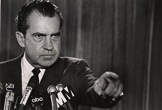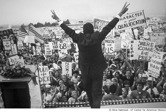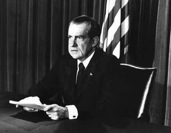

Ping Pong Diplomacy
1945
June 6 Delegates to the United Nations organizing
conference sign the U.N. Charter, which makes the
United States, Republic of China, Soviet Union,
United Kingdom, and France permanent members of the
U.N. Security Council.
August 6 & 9 The U.S. drops atomic bombs on
Japan thus opening the nuclear age.
August 14 Japan surrenders to Allies, ending World
War II.
China and U.S.S.R. sign Treaty of Friendship and
Alliance, pledging mutual respect and
non-interference in each other's internal affairs
for 30 years.
August 28 Chinese Communist leader Mao Tse-tung and
U.S. Ambassador to China Patrick Hurley enter talks
with Chinese Nationalist leader Chiang Kai-shek
over long-standing Communist-Nationalist struggle
for control of China.
October 10 Nationalists and Communists issue joint
statement of agreement, but fighting by both sides
renders the agreement invalid within two weeks.
November 27 Hurley resigns to protest U.S. decision
to end military aid to Chiang Kai-shek.Hurley also
charges that pro-Communist State Department
officials have undermined U.S. efforts to resolve
the Communist-Nationalist conflict.
November 27 President Truman appoints General
George C. Marshall as his special representative in
China.
December 22 Marshall arrives in Chongqing to try to
get the Communists and Nationalists to agree to a
cease-fire and enter into a coalition government.
1946
January 10 A truce is reached between Communists
and Nationalists, but fighting soon resumes.
June 7-30 Temporary truce between Communists and
Nationalists.
July 1 Chinese civil war resumes.
October 1 Marshall informs President Chiang
Kai-shek that he would recommend the ending of U.S.
mediation efforts to President Truman unless "a
basis for agreement is found . . . without further
delay."
October 21 Peace talks resume in Nanjing.
November 8 Chiang Kai-shek orders Nationalist
cease-fire.
November 19 Negotiations between Communists and
Nationalists end. By the end of November, heavy
fighting has resumed.
1947
January 7 Marshall returns to U.S. to become
secretary of state after more than a year of failed
mediation efforts in China.
January 29 United States announces end to its
mediation efforts in China, and immediate
withdrawal of U.S. troops.
1948
April 2 After supporting the Nationalist military
since the 1930s, U.S. sharply cuts aid because of
widespread corruption.
January 23 Beijing falls to the Communists after a
month-long siege.
1949
June 15 With the Communists in control of several
major cities, Mao Tse-tung states that he is
willing to discuss establishing diplomatic
relations with any foreign government, on "the
basis of the principles of equality, mutual
benefit, and mutual respect for territorial
integrity and sovereignty."
June 24 Twenty-one senators send a letter to
President Truman urging him not to recognize the
Chinese Communist regime.
August 5 State Department issues 1054-page White
Paper detailing U.S. policy toward China from 1944
to 1949 to counter Republican charges that the
Truman administration "lost" China to the
Communists.
October 1 Inauguration of People's Republic of
China (P.R.C.) with Chou En-lai as premier and
foreign minister, and Mao Tse-tung as chief of
state and Communist Party chairman.
October 2 U.S.S.R. recognizes the P.R.C. and severs
relations with the Nationalist government.All other
Soviet-bloc countries soon follow suit.
Dec. 8-10 Chiang Kai-shek and Nationalist officials
flee mainland China for the nearby island of
Taiwan, where they install the exiled government of
the Republic of China.






